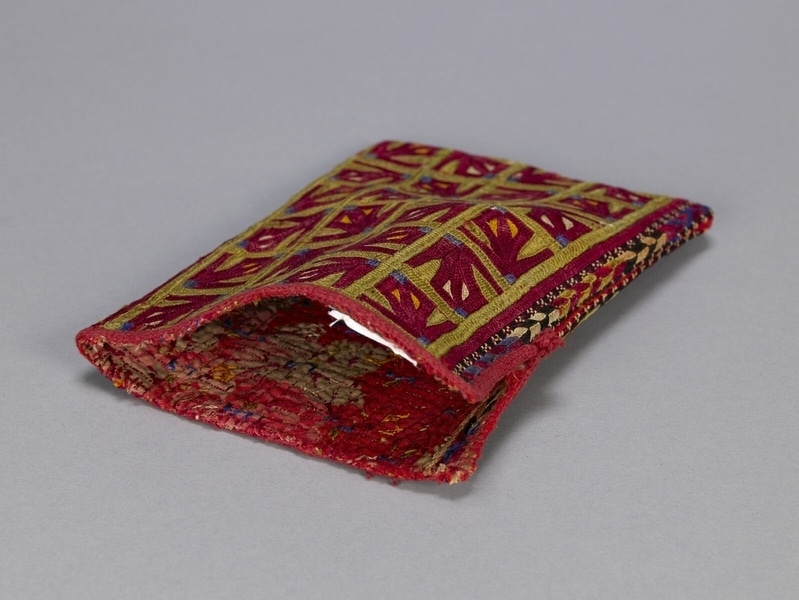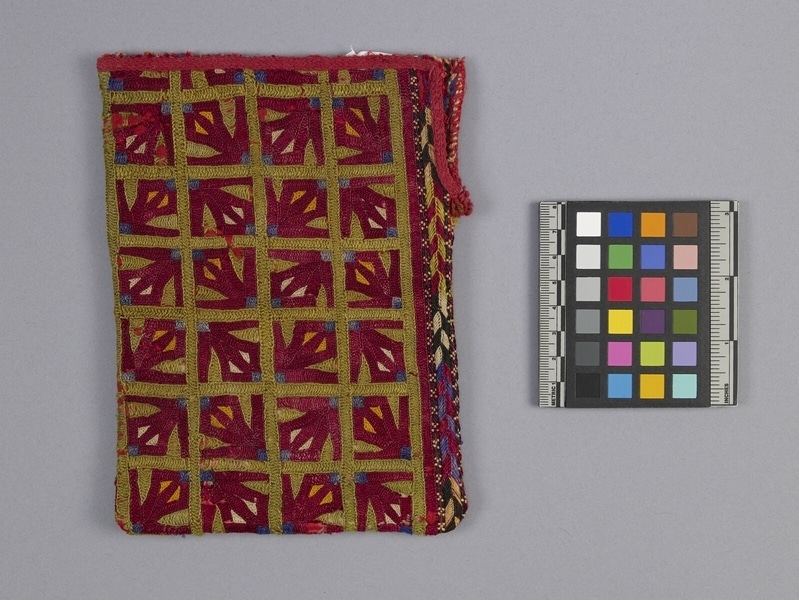Bag Item Number: 915/13 from the MOA: University of British Columbia


Description
Small, flat embroidered bag, made by seaming two identical rectangular sections together on three sides, leaving the fourth side and a side slit open at the top of the bag. The densely worked multi-coloured embroidered designs are composed of geometric, stylized floral motifs enclosed in squares, which are arranged in a grid pattern. The designs are worked on floral printed textile. The top edge and slit are trimmed with red tablet-woven edging. There are remnants of a cord or tassel at the base of the slit.
History Of Use
Used to carry small items, such as grooming aids, tobacco, medicinal herbs, money, etc. and/or to transport dowry items.
Specific Techniques
kesdi stitch: an interlocking stitch that is commonly used by Turkmen embroiderers
Narrative
According to Clarke Abbott of Tradewinds Antiques, the person who collected this piece lived in Kabul in the early 1960s, doing ambassadorial work. He traveled widely throughout the area. He was killed in an automobile accident there, and no further information is available about him or his collection. The piece was subsequently acquired by Tradewinds Antiques in Vancouver at an unknown date, and the Museum of Anthropology purchased it in 1984, when the business was liquidating its stock.
Item History
- Made in Afghanistan ?
- Collected in Afghanistan ? during 1965
- Owned by Tradewind Antiques before January 10, 1984
- Received from Museum of Anthropology Shop Volunteers (Funding source) and Tradewind Antiques (Seller) on January 10, 1984
What
- Name
- Bag
- Identification Number
- 915/13
- Type of Item
- bag
- Material
- silk fibre ?, rayon fibre ?, dye and cotton fibre
- Manufacturing Technique
- embroidered, sewn and tablet woven
- Overall
- height 19.0 cm, width 13.6 cm
Who
- Culture
- Turkmen
- Previous Owner
- Tradewind Antiques
- Received from
- Museum of Anthropology Shop Volunteers (Funding source) and Tradewind Antiques (Seller)
Where
- Holding Institution
- MOA: University of British Columbia
- Made in
- Afghanistan ?
- Collected in
- Afghanistan ?
When
- Collection Date
- during 1965
- Ownership Date
- before January 10, 1984
- Acquisition Date
- on January 10, 1984
Other
- Item Classes
- textiles
- Condition
- good
- Accession Number
- 0915/0013